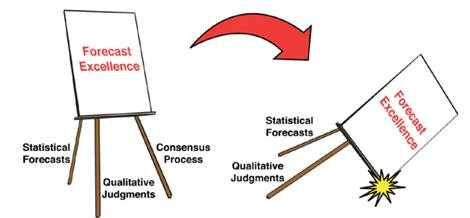Forecasting – why managers should care
Forecasting is not a new concept for most companies. However, not all companies have historically treated forecasting as a key business process, claiming that 1-2% more accurate forecasts wouldn’t make a tangible difference to their business.
By Spiros Potamitis, Data Scientist at SAS UK & Ireland
This claim proved to be wrong. Boston Consulting Group’s CFO Excellence Index, a benchmarking survey of more than 200 companies, found that excellence in forecasting is a key differentiator of top-performing functions. And as the Roman general Vegetius pointed out: “If you want peace, prepare for war”
Since COVID-19, this couldn’t be more relevant. Planning every aspect of the business has become of vital importance and we have seen an explosion of demand around forecasting solutions which will guarantee consistency, automation and enhanced accuracy.
Forecasting as a management process
Forecasting is a management process where in order to succeed an organisation will need to be very careful in the selection of the right tools, people and processes.
What we should care about the most when it comes to forecasting is to use the statistical forecasts and qualitative judgements as inputs to business plans and take the appropriate actions.

Figure 1 - Forecast Excellence [1]
In other words what we need is:
- Teams who will be accountable for the forecast output, both from the statistical and business side of things, which usually come in the form of overrides using qualitative judgements.
- A forecasting system that can reliably automate and effectively produce the statistical forecasts, as well as, capture manual interventions in a consistent way
- Strong management and business leaders who understand the value of forecasting and set the right processes where all the teams have an input throughout this process; from data science to business to marketing and sales.
We should always keep in mind that the objective of the forecasting process is for the output to be translated into business plans that drive down costs, improve productivity, increase customer satisfaction and grow revenue.
What constitutes a good forecasting system?
Collaboration: A native cloud technology is required to provide a range of collaboration methods and access rights to the different personas that interact with the tool. For example, business managers will need read access to the initial reports of the statistical outputs to get a first insight. At the same time, the analysts need to be able to easily share their work or save best practices in a common space which their colleagues can see and re-use when appropriate.
Openness: The tool needs to be able to incorporate Open Source code in the forecasting process and to parallelise and run those algorithms in memory. This will give the ability to take advantage of the programming talent in the company in the best possible way.
Completeness: Here, the right tool needs to be able to streamline the forecasting process; from the initial transformation of the data into a time series format to the exportation of the forecast output into dashboards for business leaders and decision-makers to consume.
Individual Judgement: Many times, there is business knowledge that cannot be captured in historical data; e.g. a competitor’s move in the market or the incorporation of an unusual event. In those cases, the ability to incorporate individual judgement in the form of overrides of the statistical forecast is of great value. The system should give the ability to produce overrides along any forecasting period, capturing the history of manual interactions and at the same time automatically resolving any reconciliation issues.
Automation: There could be no complete forecasting tool without the ability to reliably and effortlessly automate the process. After the creation of the project, the tool should produce forecasts on new data in an automated way by exporting the whole project as a batch API which can run in the environment of choice.
And what role plays even Machine Learning here?
When the automatic time-series techniques cannot produce adequately accurate forecasts, a modern tool should be equipped with multiple machine learning techniques to tackle the issue. When machine learning techniques such as neural networks are used the system needs to not only produce very accurate forecasts, but automatically create the additional variables required for the generation of the predictions.
Final thoughts
I would like to conclude using one of my favourite phrases in the world of analytics: “What Gets Measured Gets Rewarded and what Gets Rewarded Gets Done”
This also applies in the world of forecasting. As many teams are involved in the process, the statistical output is just one input of the overall process. The recipe for success is for management to ensure that every step in the process is governed, that statistical outputs are monitored, that manual inputs are consistently captured and that their impact is evaluated.
SAS Visual Forecasting simplifies the forecasting process from the data transformation to the production of the final forecast outputs, meaning management can focus their efforts on what matters the most: developing effective strategies to enhance business outcomes.










